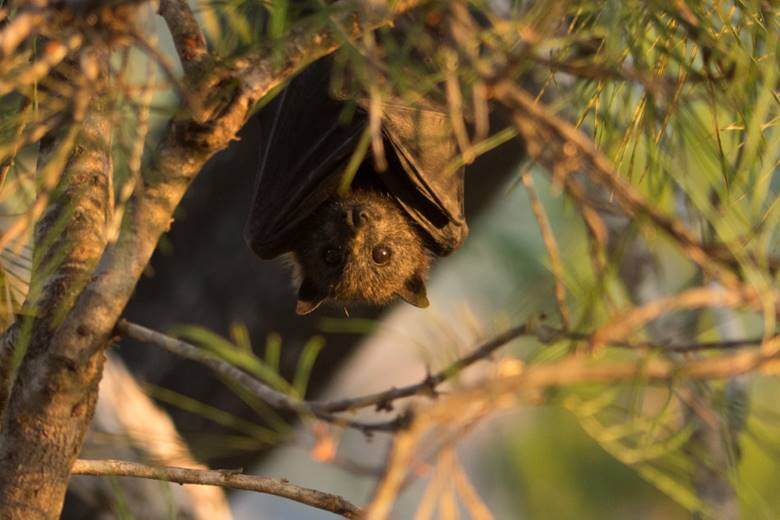WIRES Giving Day - Save the Wild!
September 2025
For emergency rescue support 24/7 please call 1300 094 737

Photo credits – Andrya Hart, Flying-fox at The Channon
Have you seen a flying-fox recently in the daytime in a tree? Or found one dead on the ground?
Large areas of the North Coast of NSW as well as South East Queensland are experiencing what appears to be a severe flying-fox starvation and dehydration event. It is thought that the unusually dry conditions have affected flowering and fruiting of their usual feed trees. Moisture content on foliage is currently very low, fruit and flowers also lack the normal amount of moisture and this is where bats get their nutrition and hydration.
There are many reports of bats being found alone in trees in the daytime not having the energy to return to roost in their colony. Several WIRES branches are receiving unprecented numbers of flying-fox calls for this time of the year. They, like all wildlife groups in the area, are stretched to the limit.
With a limited number of volunteer vaccinated bat rescuers, WIRES is asking the public to be understanding in this situation and would like to provide some advice should you see a flying-fox alone:
October to December are the birthing months. This is when females give birth to a single pup which they carry across their chests as it suckles a teat in the mother’s wing pit. This starvation event could cause more females to get into difficulty birthing and more pups to be separated from their mothers. Please call WIRES if you find a flying-fox pup.
Flying-foxes are very intelligent creatures and play an important role in Australian environments. They are natural pollinators and seed dispersers and are crucial for the survival and regeneration of our native forests. Sadly, this starvation event appears to be yet another indication of the catastrophic affect of a changing climate on our ecosystems. Please do what you can to plant native trees and plants so that in the future our wildlife will have food available to them.
If you are keen to make a difference for wildlife, consider joining WIRES. For more information about how you can join read WIRES information about becoming a volunteer.
WIRES Northern Rivers covers the area of the Drake/Ewingar fires – easterly from Drake. Please phone (02) 6628 1898 for wildlife assistance. For Mid North Coast and other regions in NSW please call WIRES NSW Rescue Line on 1300 094 737.
WIRES relies heavily on the generosity of caring people for support. All donations $2 and over are tax-deductible. We need help to feed all the native animals in care, to assist, please donate now to WIRES Wildlife Food Fund.
Stay in touch and get our regular rescue stories, WIRES updates and a free copy of our 15 Ways to Help Wildlife ebook
September 2025
June 2025
May 2025
April 2025
March 2025
February 2024
July 2023